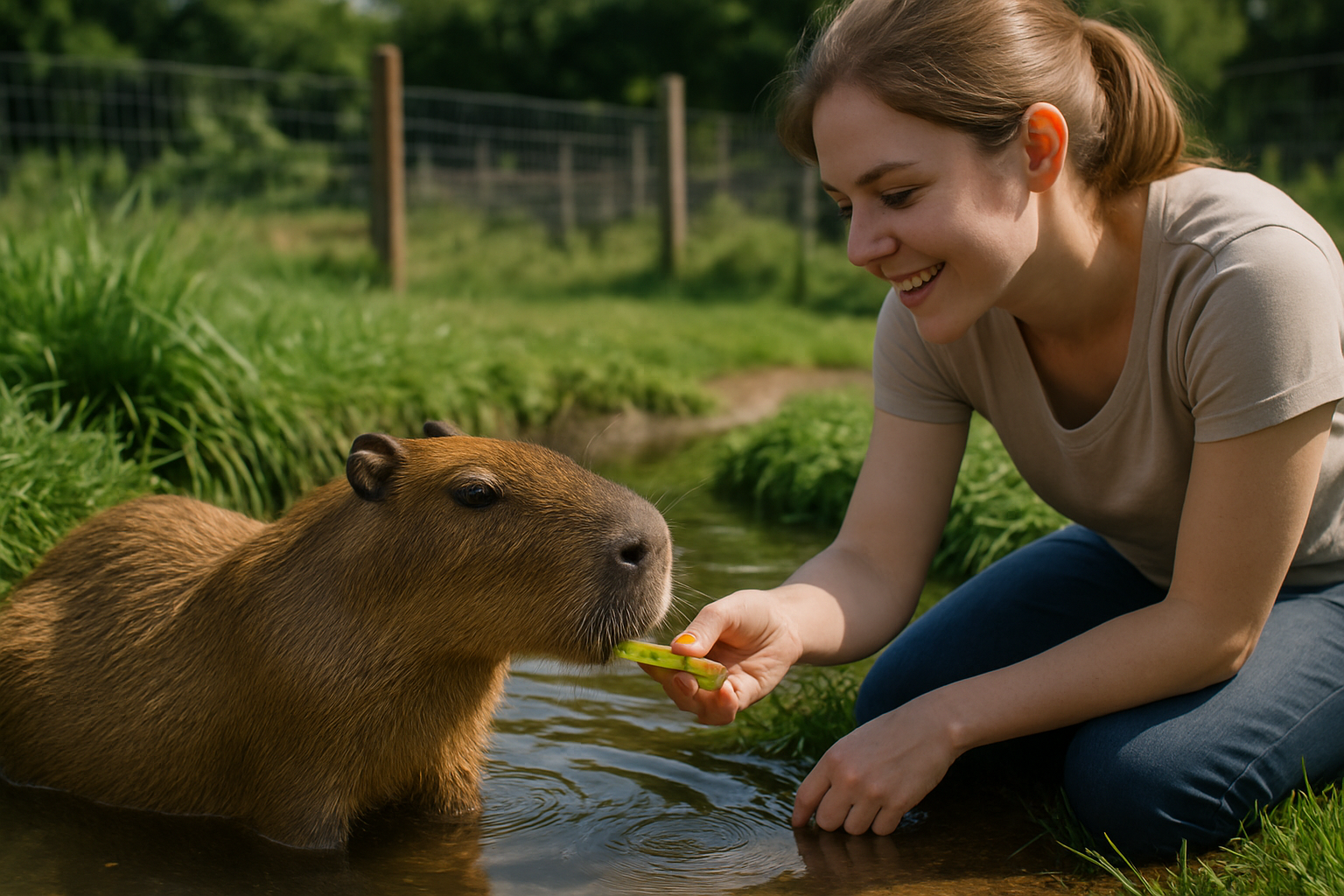The Curious World of Capybara Companionship
Imagine a pet that's part guinea pig, part hippo, and entirely adorable. Enter the capybara, the world's largest rodent and an increasingly popular exotic pet. These gentle giants are capturing hearts worldwide, but what does it really take to keep one as a companion? Let's dive into the fascinating realm of capybara care and explore why these unique creatures are making waves in the pet world.

Historically, capybaras have been hunted for their meat and hide in their native habitats. However, in recent years, their docile nature and unique appearance have caught the attention of exotic pet enthusiasts. This shift from prey to pet has sparked debates about the ethics and practicality of keeping such large rodents in domestic settings.
The Legal Landscape of Capybara Ownership
Before considering a capybara as a pet, it’s crucial to understand the legal implications. Laws regarding exotic pet ownership vary widely by country, state, and even city. In the United States, for example, capybaras are legal in some states but prohibited in others. Prospective owners must navigate a complex web of regulations, often requiring special permits or licenses.
The legal status of capybara ownership is constantly evolving. As of 2023, several states have tightened restrictions due to concerns about the animals’ welfare and potential ecological impact if released into non-native environments. Staying informed about local laws is essential for anyone considering this unique pet.
Creating a Capybara-Friendly Habitat
Capybaras have specific habitat needs that can be challenging to meet in a domestic setting. These social animals thrive in groups and require ample space to roam, graze, and swim. A suitable enclosure should include:
-
A large outdoor area (at least 1,000 square feet per capybara)
-
A deep pool or pond for swimming and temperature regulation
-
Shaded areas for rest and protection from the sun
-
Grassy areas for grazing and exercise
-
Sturdy fencing to prevent escapes
The initial setup for a capybara habitat can be costly, with estimates ranging from $5,000 to $20,000 or more, depending on the size and complexity of the enclosure. Ongoing maintenance, including water filtration systems and landscaping, adds to the expense.
Diet and Health Considerations
Capybaras are herbivores with a diet primarily consisting of grasses, aquatic plants, and vegetables. In captivity, their diet should mimic their natural feeding habits as closely as possible. This typically includes:
-
Fresh grass and hay (the foundation of their diet)
-
Vegetables like lettuce, carrots, and sweet potatoes
-
Commercial guinea pig or horse feed as a supplement
-
Occasional fruits as treats
Regular veterinary care is essential for capybaras, but finding a vet experienced with these exotic animals can be challenging. Common health issues include dental problems, parasites, and skin conditions. Preventative care, including regular check-ups and vaccinations, is crucial for maintaining their health.
Social Dynamics and Behavior
One of the most fascinating aspects of capybaras is their highly social nature. In the wild, they live in groups of 10 to 20 individuals, and this social structure is important to maintain in captivity. Keeping a single capybara is generally discouraged, as it can lead to stress and behavioral issues.
Capybaras are known for their gentle temperament and can form strong bonds with their human caretakers. They communicate through a variety of vocalizations, including whistles, barks, and purrs. Their social nature extends to other animals as well, with many capybara owners reporting harmonious relationships between their capybaras and other pets like dogs or cats.
The Environmental Impact of Capybara Pets
As the popularity of capybaras as pets grows, so do concerns about their environmental impact. In areas where they’re not native, escaped or released capybaras could potentially establish feral populations, disrupting local ecosystems. This has already occurred in some parts of Florida, where small groups of capybaras have been spotted in the wild.
Responsible ownership is crucial to prevent such ecological issues. This includes secure enclosures, proper identification (such as microchipping), and a commitment to the animal’s lifelong care. Potential owners should also consider the carbon footprint of maintaining a large, semi-aquatic animal in a non-native environment.
The Future of Capybara Companionship
As more people become aware of capybaras as potential pets, the industry surrounding their care is evolving. Specialized products, from capybara-safe pool cleaners to custom-made harnesses, are entering the market. The estimated price range for a capybara can vary widely, from $1,000 to $3,000 for the animal alone, not including setup costs.
The growing interest in capybaras has also led to increased research into their behavior and needs in captivity. This research is crucial for improving care standards and ensuring the well-being of these animals in domestic settings.
Ethical Considerations and Alternatives
While capybaras can make fascinating companions, the ethical implications of keeping such large, social animals as pets are complex. Potential owners should carefully consider whether they can provide the extensive space, social interaction, and specialized care these animals require.
For those intrigued by capybaras but unable to keep them as pets, there are alternatives. Supporting capybara conservation efforts, visiting sanctuaries, or even “adopting” a capybara through a wildlife organization can provide a connection to these remarkable animals without the challenges of ownership.
In conclusion, the world of capybara companionship is as complex as it is intriguing. These gentle giants offer a unique pet experience, but one that comes with significant responsibilities and considerations. As we continue to learn more about these remarkable rodents, the future of capybara-human relationships will undoubtedly evolve, hopefully in ways that prioritize the well-being of these captivating creatures.





